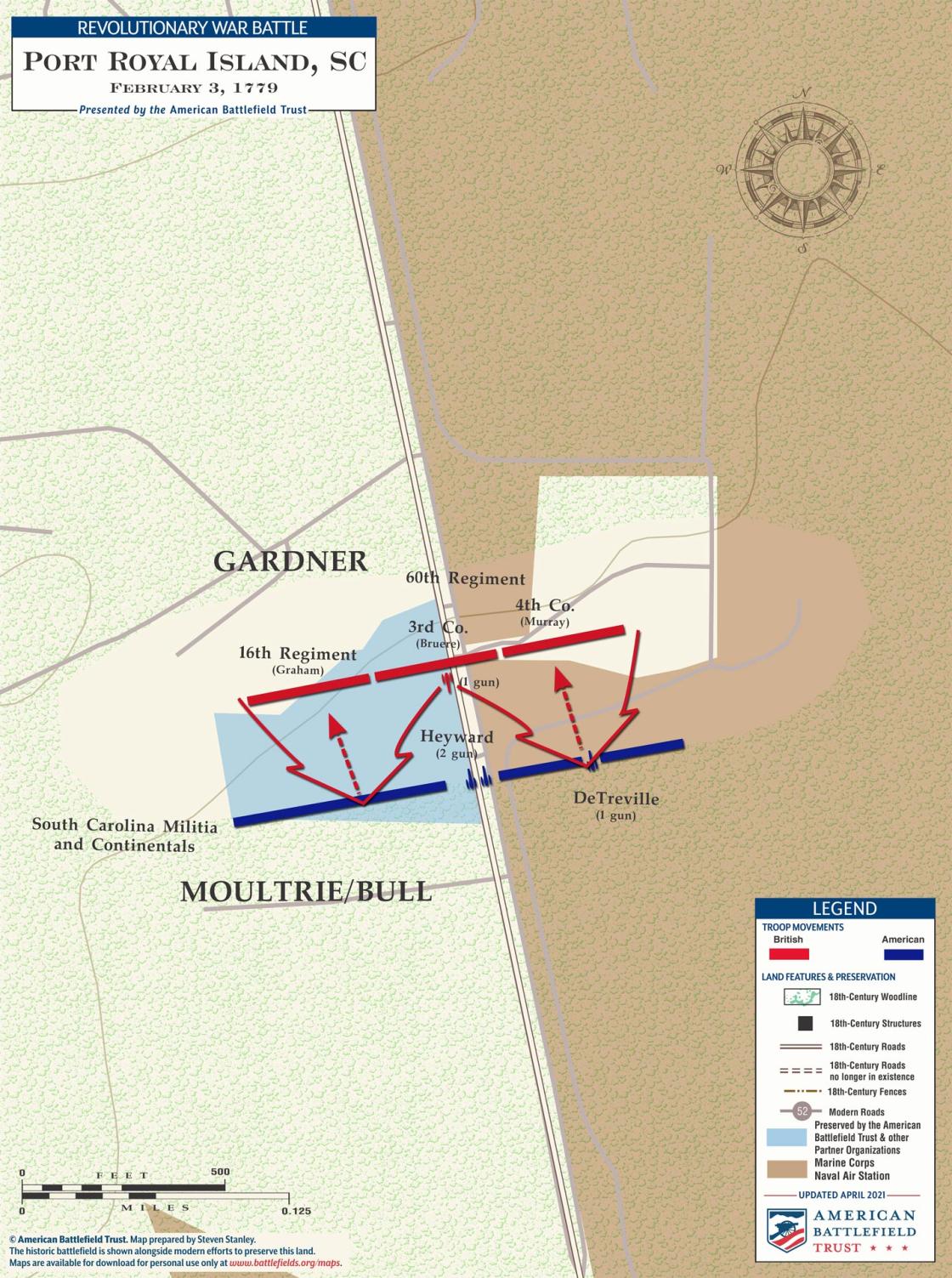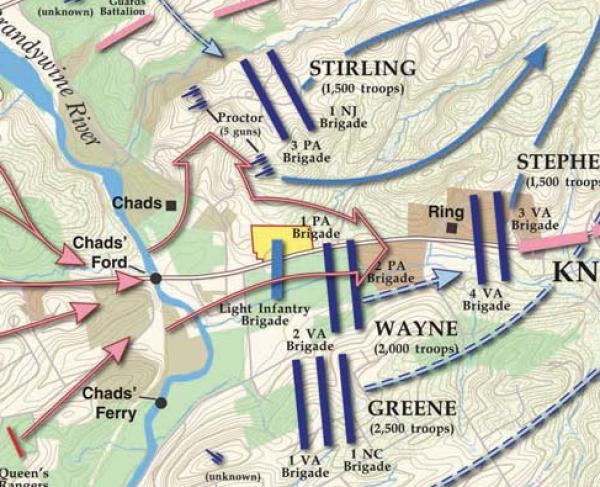Port Royal Island | Feb 3, 1779
The British high command also elected to establish a base on Port Royal Island, South Carolina, just north of Savannah. This base could support the British navy, movements through the interior, and potential operations against Charleston, South Carolina.
On February 3, 1779, Maj. James Gardiner went ashore with light infantry from the 16th Regiment of Foot and two battalions from the 60th Regiment of Foot. The following day, American Brig. Gen. William Moultrie, advanced from Beaufort, South Carolina, to meet Gardiner. Moultrie's force consisted of Continental Regulars and militia. Among them were a number of African Americans, a militia unit from Charleston recruited from the city's Jewish population. Additionally, two signers of the Declaration of Independence, Thomas Heyward, Jr. and Edward Rutledge were in Moultrie's ranks, a unique occurrence in the annals of the American Revolution.
Moultrie encountered Gardiner atop Gray's Hill. Both sides exchanged artillery fire before the musketry opened. For the next 45-minutes, Gardiner and Moultrie slugged away at each other, with neither force able to gain the upper hand. The battle began to sputter out when both commands ran low on ammunition and Gardiner prudently broke off the fight and withdrew.
Upon his return to Savannah, Georgia, Gardiner was censured by Maj. Gen. Augustine Prevost for the failure of the expedition. Later in the year, the British repulsed an American effort to recapture Savannah and in the spring of 1780, a British army led by Sir Henry Clinton captured Charleston.
Related Battles
30
52


